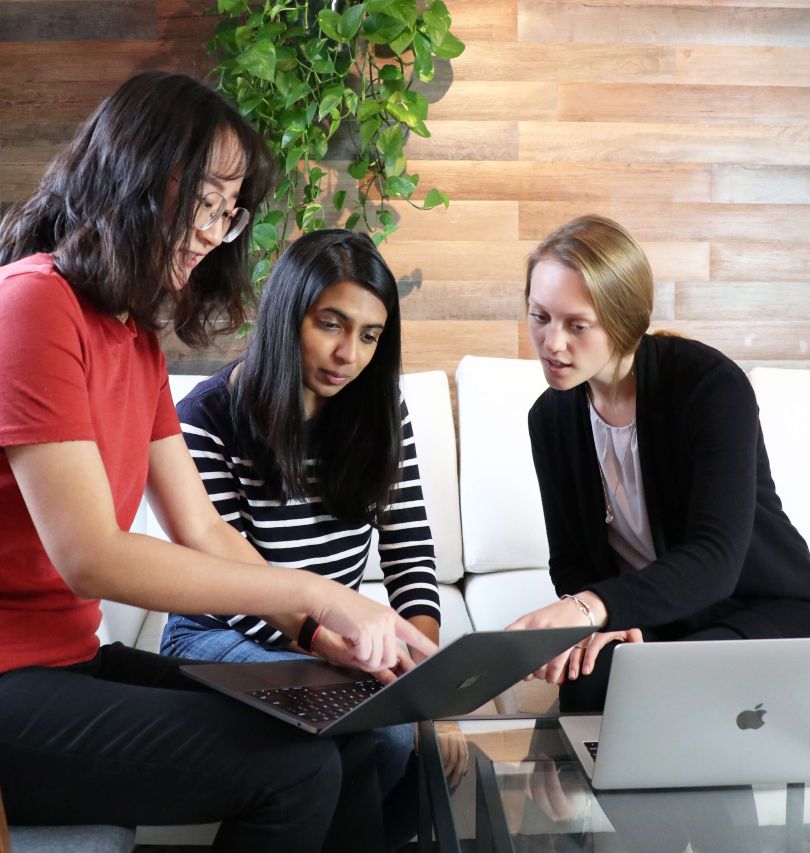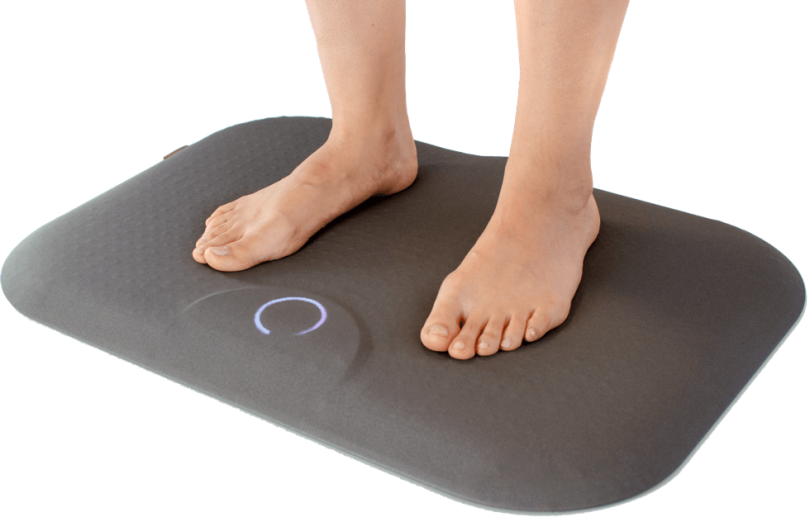Take a breath and count to 20.
In the span of those 20 fleeting seconds, a person with diabetes can take a step toward saving their life and limbs.
This is the premise behind Podimetrics, a virtual-care management company that serves high-risk people with diabetes. By placing their feet on Podimetrics’ proprietary SmartMat for 20 seconds a day, users can help catch damaging foot ulcers in their earliest stages.
What Podimetrics Does
Every year, over 5,000 Americans will lose a limb — not to combat or accident, but to the neuropathic ulcers caused by diabetes.
“Foot ulcers can lead to amputations and a cascade of events in the life of somebody that has diabetes, neuropathy and vascular disease,” said David Linders, CTO and co-founder of Podimetrics. “The irreversible change has a devastating impact on quality of life: lack of mobility, fear, limited access to doctor’s visits.
“It all creates a downward spiral,” he added.
“Our mission is to stop that cascade, by catching foot ulcers before they break through the skin,” said Linders, whose passion for the subject started with an undergraduate research project on prosthetics. “We’re looking to elevate the quality of life and maintain the independence of our patients.”
It’s a mission that Kate Wood, business analytics manager, holds close.
“My grandmother lives with diabetes,” said Wood. “She faces so many challenges with her health and comorbidities that she says it’s a full-time job managing her appointments and medications.
“But it’s true,” she added earnestly. “It can be incredibly overwhelming for these patients.”
As business analytics manager, Wood helps Podimetrics intuitively leverage its priceless data to bring the most good to its users.
“We encourage data-driven decisions in every aspect of the business, from our product offerings to ensuring we’re constantly monitoring changes in patient data,” she said.
Wood and her team work with colleagues like Min Zhou, a senior machine learning engineer, who shape their developments around the data they receive from users.
“We’re always seeking data to help better serve the patients,” Zhou said. “We respond to feedback like: Where can they see their daily scans? Where can they best take their temperature? Where exactly are the six key points on the foot we gather data from?”

What are Foot Ulcers?
Zhou and her peers connect with the nursing team and patients to round their understanding of prevention and the problems that matter to Podimetrics users. Unique use-case challenges include users who have already experienced one amputation or those who cannot stand on their own.
Wood chimed in: “We’re always measuring and predicting how our users are engaging with our product over time: Our goal is to adjust to the patient and to meet them where they are.”
Though Wood’s discourse is rooted in data, her language is strikingly compassionate. It is clear that those who work at Podimetrics regard their product’s placement in the homes of users as both a privilege and a duty.
“What we do is take that burden from them for this one aspect of their health,” Wood said. “All they need to do is step on their mat once a day, and we’ll take care of the rest.”
How does Podimetrics’ product work?
“It’s a great question,” Wood said, her face lighting up. “It’s a prescription-only device, meaning we work with the patient’s provider.”
Next, the user simply needs to take their mat out of the box and press the power button.
“It will automatically connect to the nearest cell tower — and that’s it,” Wood said. “They never have to turn it off or on again, we receive their data when they step on the mat, and we can automatically reach their provider.”
The Podimetrics team monitors patient scans, looking for temperature irregularities that might signal the beginnings of a foot ulcer. When concerning temperature shifts arise, Podimetrics connects with the patient’s provider, who can provide customized treatment.
“By taking that step to help prevent amputations, we’re making sure that patients maintain their freedom,” Wood said.

From All Walks
What has Podimetrics learned from users?
When Wood, Zhou and Linders speak about their users, they don’t fixate on data. Instead, the conversation perpetually gravitates to the user’s lived experiences. It’s clear they see the faces of the Podimetrics customers they have met over the past decade of work.
Linders can remember the diabetes care clinics he visited during the ethnographic studies in Podimetrics’ early days. He knows the telltale scent of a diabetes-induced wound and the heartbreak of meeting patients struggling for the basic privilege of maintaining foot health. He has stepped into patient homes — neat suburban houses touched by the warmth of caretakers and the cluttered apartments of patients battling diabetes alone.
“I once visited a gentleman who lived in a mobile home, way out in a rural area of the South,” Linders said. “He lived by himself and had arthritis in both hands.
“I realized: ‘My goodness, we need to make sure this device is easy-to-use for those without manual dexterity,’” Linders recalled with furrowed brows.
In the cramped mobile home, Linders found there was not a single square foot of floor that could house the gentleman’s mat permanently, so he and his colleague worked with him to find a convenient spot to lean it upright against the wall after his daily scan.
Accessibility Is Everything
Wood sees the face of a man living in an incommodious high-rise in the Bronx.
“He lived alone,” she said. “And the only thing he loved to do was play online chess.”
She and her coworker set the SmartMat up next to his computer and worked with the man to build the life-saving 20 seconds into his daily ritual.
“Every single patient has a different background: He didn’t have any caregivers, but he would get up to go to his computer to play these online chess games,” Wood continued. “We chatted with him and said ‘How about the habit is: Before you sign on, go ahead and take care of your scan?’”
These anecdotes are plentiful, rich with compassion and each soars further beyond the traditional long-distance role of a tech professional.
“Those moments when we’ve provided a sense of peace end up being the ones that really stand out.”
—David Linders
There is the story of the man in Salt Lake City, who only realized he had developed a dangerous ulcer when Wood was helping him take his socks off for a practice scan. There is the user who called Linders directly to thank him for helping him catch a burgeoning sore — twice. There is the wife of a patient who called the tech helpline once a week for the human connection.
“She called every week to make sure we got her husband’s scans, but the conversation would inevitably turn to the other aspects of her life” Linders remembered. “Once a week for half an hour, either myself or my colleague Zoe would talk to her.”
They spoke about her family, her health, her fears.
“Those moments when we’ve provided a sense of peace end up being the ones that really stand out,” Linders said.
From inception to execution to user interaction, every piece of Podimetrics reflects its larger purpose. In Linders’ eyes, Podimetrics is not solely a technology-based company. Instead, he homes in on solving for a brighter future for people living with diabetes.
“We’re laser-focused on taking care of our patients with this specific need, and we will adapt whatever technologies we can to meet that need,” he said. “We look beyond ourselves for what’s next.”







